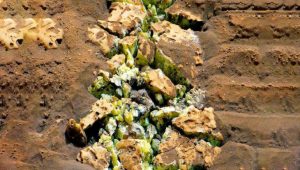Researchers have discovered an over 900-foot-deep ‘blue hole’ in the Western Caribbean off the Mexican coast. Spread over an area of 13,660 square meters, the giant, underwater cavern is located in Chetumal Bay and has been named Taam Ja’, which means ‘deep water’ in Mayan.
Taam ja’ Blue Hole is now the world’s second-deepest known blue hole, after the Great Blue Hole in Belize. The newly discovered blue hole has a nearly circular shape at its surface.
The blue holes found on coastal karst platforms around the world, including the Caribbean Sea and the Yucatán Peninsula, contain unique environments within them. The new, massive sinkhole off the coast of the Yucatan Peninsula in Mexico has a nearly circular shape at its surface with steep sides that form a large conic structure covered by biofilms, sediments, limestone, and gypsum ledges.
The blue hole first discovered in 2021 could offer a glimpse of how life evolved through the millennia in the marine world. In the past, researchers found bacteria at such depths in blue holes in the Caribbean, where no other life form was found, indicating the evolution of life at those depths. A series of irregular terraces were detected at water depths, near the eastern and northwestern walls of the blue hole before developing steep and almost vertical slopes.
Researchers from the Department of Observation and Study of the Land, the Atmosphere, and the Ocean, Chetumal, Mexico have published their findings about the blue hole in Frontiers in Marine Science.















